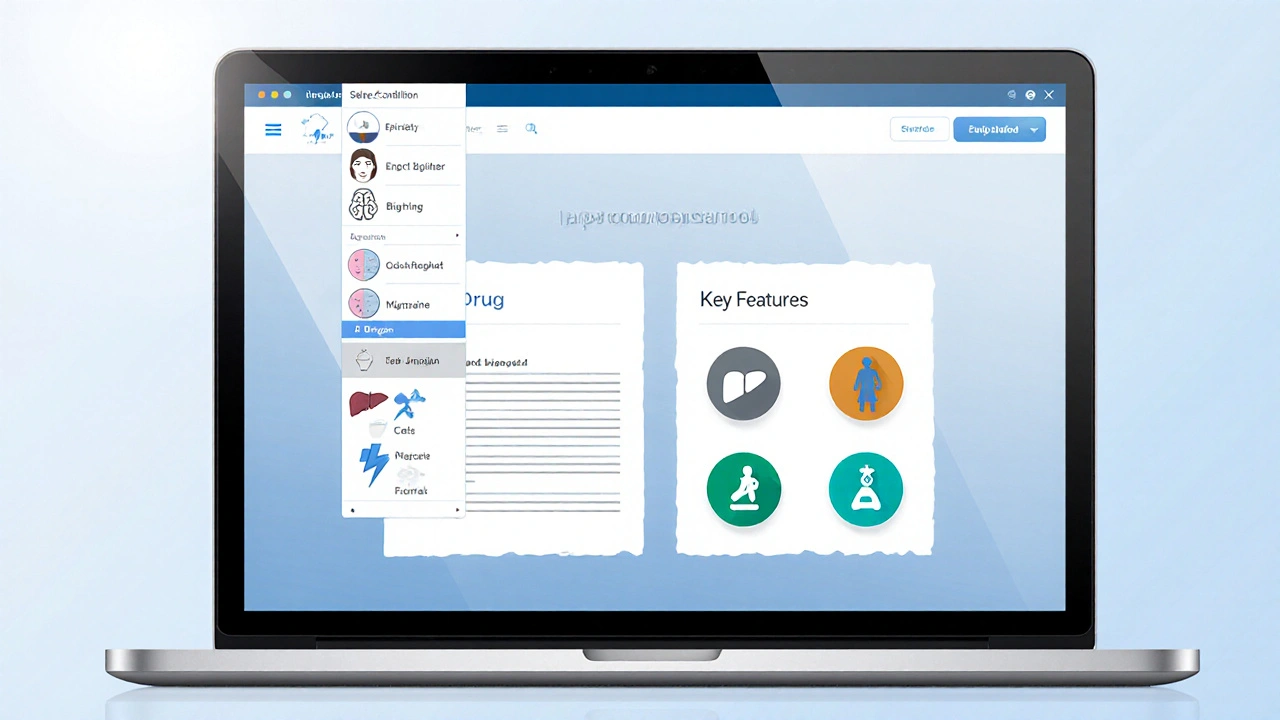When working with Depakote, the brand name for divalproex sodium, an anticonvulsant medication used to control seizures, stabilize mood in bipolar disorder, and prevent migraines. Also known as valproic acid, it belongs to the broader class of seizure disorders, conditions where abnormal brain activity leads to convulsions or loss of consciousness. For many patients, Depakote is a daily anchor that helps keep daily life steady.
Depakote’s core action is boosting the level of gamma‑aminobutyric acid (GABA) in the brain, which calms nerve firing. This mechanism makes it useful for three main health challenges: seizure disorders, such as epilepsy, bipolar disorder, where mood swings can be severe, and migraine prevention, helping reduce the frequency of painful headaches. The drug’s versatility is why doctors often suggest it as a first‑line treatment.
Understanding Depakote starts with its dosage forms. It comes in tablets, sprinkle‑caps, and extended‑release versions, each designed for different schedules. Typical adult doses for seizures range from 500 mg to 2,000 mg per day, split into two or three doses. For bipolar disorder, doctors may start low (250 mg) and increase gradually to minimize side effects. When used for migraines, the dose usually mirrors the seizure regimen but is tailored to the patient’s headache pattern.
Side effects are a reality. The most common issues include nausea, tremor, weight gain, and hair loss. More serious, though rarer, concerns involve liver toxicity, pancreatitis, and a small risk of birth defects if taken during pregnancy. Because of these risks, regular blood tests are recommended to monitor liver enzymes and platelet counts. Knowing what to watch for helps you act fast if something feels off.
Drug interactions can turn a smooth routine into a headache. Depakote can raise the levels of other meds, such as lamotrigine, increasing the chance of rash. It also lowers the effectiveness of hormonal birth control, so a backup method is wise. Alcohol, certain antibiotics, and over‑the‑counter pain relievers may boost side‑effect intensity. Always share a full medication list with your provider.
Pregnant patients face a tough decision. While Depakote is effective, its association with neural‑tube defects means it’s usually avoided unless no safer alternative works. If you’re planning a family, discuss pre‑conception counseling and possible switch strategies with your doctor.
Many users wonder how quickly Depakote starts working. For seizures, therapeutic levels often appear within a few days, but full seizure control can take weeks. Mood stabilization in bipolar disorder may need 2‑4 weeks before you notice a steadier emotional baseline. Migraine prevention benefits typically emerge after a month of consistent use.
When you first get a prescription, your pharmacist can help you set up a simple schedule. Using a pill organizer, setting phone reminders, or linking doses to daily meals can keep you on track. If you miss a dose, take it as soon as you remember—unless it’s almost time for the next one, then skip the missed dose and continue as normal.
Cost is another factor many consider. Generic divalproex sodium is usually cheaper than the brand name, but insurance coverage varies. Checking pharmacy discount programs or asking your doctor for a prescription that specifies “generic” can save you money without sacrificing quality.
Below you’ll find a curated collection of articles that dive deeper into each of these topics. Whether you’re looking for buying guides for generic versions, detailed side‑effect breakdowns, or comparisons with alternative treatments, the posts ahead give practical, easy‑to‑follow advice. Keep reading to get the full picture and make the most of your Depakote therapy.
